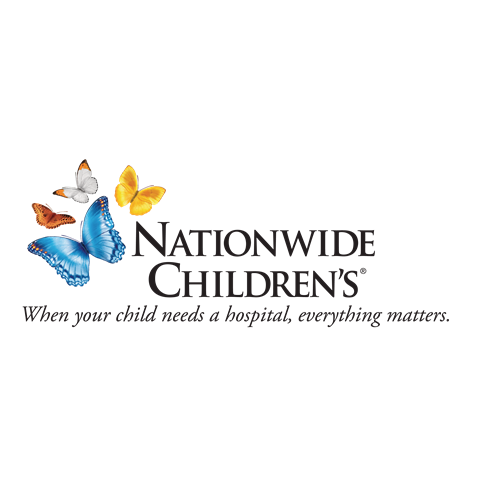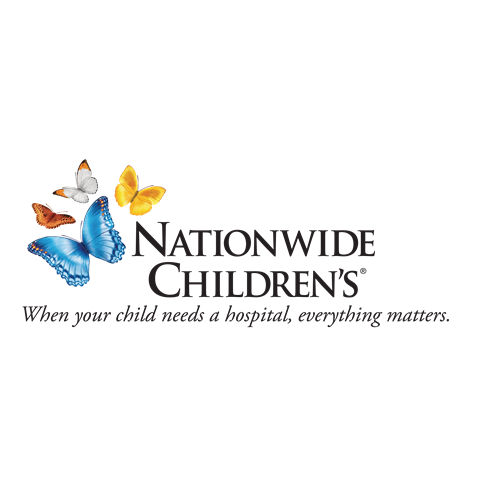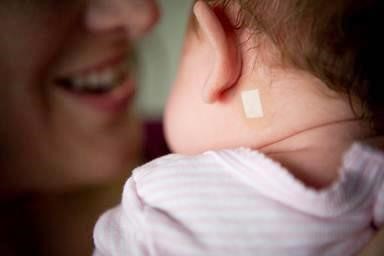Available Technologies
# of Displayed Technologies: 15 / 15
Applied Category Filter (Click To Remove): Diseases and Disorders
Categories
 Neuregulin-1 as Protection from Respiratory Viral Infections
Neuregulin-1 as Protection from Respiratory Viral Infections
TS-002168 — Children have a higher chance of morbidity and mortality from respiratory viral infections. Severe respiratory viral infections like Respiratory Syncytial Virus (RSV) and Parainfluenza viruses can lead to the development of asthma in patients. Clinical researchers at Nationwide Children’s Hospital found that neuregulin-1 (Nrg-1) may be an effective and protective treatment for patients diagnosed with severe respiratory viral infections. Their successful models with mice showed that Nrg-1 may prevent post-viral airway disease and reduce mortality if further studied and applied to human patients in the future.
- College:
- Inventors: Grayson, Mitchell; Hussain, Rehan
- Licensing Officer: Murrah, Kyle
 Sweat Technology for Monitoring Cystic Fibrosis Health and Adherence
Sweat Technology for Monitoring Cystic Fibrosis Health and Adherence
TS-001225 — Cystic fibrosis is an inherited disorder that affects cells that produce sweat and mucus, causing significant damage to the digestive system, lungs, and other organs. A team at Nationwide Children's Hospital has developed a non-invasive monitoring system to track and test a patient with this disease. This technology is a skin patch that measures the metabolomics of the patients sweat to evaluate the clinical health of patients afflicted with cystic fibrosis.
- College:
- Inventors: Hayes, Don; Kopp, Benjamin; Woodley, Frederick
- Licensing Officer: Murrah, Kyle
.png) Virtual Reality-Based Pediatric Traumatic Brain Injury Assessment and Rehabilitation Platforms
Virtual Reality-Based Pediatric Traumatic Brain Injury Assessment and Rehabilitation Platforms
TS-000621 — Traumatic brain injury (TBI) is a leading cause of acquired disability in U.S. children and adolescents. Impairment of executive functions post-TBI has broad and profound implications for everyday life of pediatric patients, and the development of effective rehabilitation strategies is of significant clinical importance. Researchers at Nationwide Children’s Hospital have developed virtual reality (VR)-based programs for assessing cognitive function and providing subsequent rehabilitation. This pediatric TBI assessment software provides VR-based cognitive-assessment tasks and an additional training platform that pairs with the Oculus Rift virtual reality viewer. The training program is designed with a series of environmentally-enriched three-dimensional cognitive exercises that aid in rehabilitation of executive core functions among pediatric patients with TBI in a highly controlled, safe, and automated manner.
- College:
- Inventors: Xiang, Henry; Patterson, Jeremy; Shen, Jiabin
- Licensing Officer: Murrah, Kyle
.png) Neuromuscular GRO worksheet
Neuromuscular GRO worksheet
TS-000596 — Spinal Muscular Atrophy (SMA) is a severe neuromuscular disease and the leading genetic cause of infant mortality. Moreover, existing treatments suffer from notable floor and ceiling effects and also poorly discriminate improved motor performance in patients. To circumvent these challenges, researchers at Nationwide children’s have developed the Neuromuscular Gross Motor Outcome (GRO) worksheet. The GRO worksheet is a gross motor outcome measure designed to assess whole body strength, motor development and function for all levels of ability across the lifespan in those diagnosed with SMA. Hence, the GRO worksheet is the ideal outcome measure tool for SMA or similar conditions to answer the need to quantity gross motor ability across a wide age span.
- College:
- Inventors: Lowes, Linda; Alfano, Lindsay; Iammarino, Megan; Reash (Miller), Natalie
- Licensing Officer: Murrah, Kyle
 Method for Inhibiting the Growth of Intrabacterial Pathogens Salmonella and Francisella in the Infected Cells (KH-1)
Method for Inhibiting the Growth of Intrabacterial Pathogens Salmonella and Francisella in the Infected Cells (KH-1)
TS-000480 — Intrabacterial pathogens are infectious bacteria that infiltrate cells and infect those that come in contact with them. Significant bacterial infections include those of salmonella, often caused by the consumption of contaminated food, and francisella, caused by handling infected animal tissue. A team at Nationwide Children’s Hospital has developed novel therapeutics to inhibit the growth of these bacteria in infected cells, designated as KH-1 and KH-2. These compounds target the host immune pathway to help the infected cell control bacterial growth, and control infections in not only antibiotic susceptible strains, but also multidrug resistance strains.
Benefits:
The proposed application of the compound is a novel method to control infections by intracellular pathogens. Traditional antimicrobials directly target bacteria and frequently select for antibiotic resistant mutants. Our preliminary data indicate that KH-1 does not directly kill bacteria, rather it targets the host immune pathway to help the infected cell control bacterial growth. The KH-1 is proposed for controlling infections by not only antibiotic susceptible strains but also multidrug resistance strains.
Stage of Development:
The use of antimicrobials to treat infections selects for antibiotic resistant mutants. Antibiotic
resistance is a top threat to public's health. In the U.S alone, antibiotic resistance is responsible for more than 2 million infections and 23,000 deaths per year (CDC 2019). Novel intervention strategy is urgently needed to combat multidrug resistant strains and replace the use of antibiotics.
Prototype: Intracellular pathogens use multiple mechanisms to manipulate the host cell immunity in
such a way that is favorable for pathogens to grow and ultimately cause host cell death that is indicated by releasing some intracellular components from the infected host cells including lactate dehydrogenase. Host targeted-drugs protect the infected cell from death can be used as host therapy to control infections-it allows the infected host cell time to kill the ingested microbe. We screened a kinase inhibitor library for compounds that limit cell death from Salmonella infection and identified KH-1 as antiSalmonella, and in subsequent testing, also anti-Francisella.
Proof of principle: KH-1 treatment reduces host cell lysis and intracellular bacterial (Salmonella and Francisella) growth inside J774.1 macrophages. KH-1 also protects the mice from lethal Salmonella and Francisella infection.
Future Work:
1- We will identify KH-1 target(s) in the host cell and investigate how KH-1 helps the infected cell to limit bacterial growth.
2- We will study any observed side effects of KH-1 to the host.
3- We will study pharmacokinetics and dynamics of KH-1.
4- We will improve KH-1 delivery to achieve the best effects.
5- We will examine the effects of KH-1 on controlling multi-drug resistant intracellular bacterial
strains.
Potential Applications / Potential Markets:
1- Treating infection caused by intracellular pathogens not limiting to Salmonella and Francisella.
2- Treating infections caused by multidrug resistant intracellular pathogens.
Opportunity/Seeking:
Commercial Partner
Licensing
IP Status:
Patent Application Submitted
- College:
- Inventors: Hoang, Ky; Gunn, John
- Licensing Officer: Murrah, Kyle
 Transcranial Doppler Ultrasound Determination of Pathologic Mechanisms and Treatment Strategies for Cerebral Malaria
Transcranial Doppler Ultrasound Determination of Pathologic Mechanisms and Treatment Strategies for Cerebral Malaria
TS-000338 — Worldwide, malaria affects 2 million individuals annually. Cerebral malaria is the most severe neurological manifestation of malaria with case fatality rates ranging from 15-40%. Researchers at Nationwide Children’s Hospital have developed a method for using Transcranial Doppler to detect distinct waveform morphologies and identify pathogenic mechanisms leading to neuronal injury in children with cerebral malaria.
Benefits:
By identifying the specific sub-type of cerebral malaria, clinicians will be able to treat patients for their particular pathology, improving therapeutic outcomes.
Stage of Development
Following proof of concept studies, the researchers evaluated its use clinically in over 180 children with cerebral malaria and 140 control patients. The published study validated the use of transcranial Doppler ultrasound (TCD) in identifying distinct patient phenotypes which can serve as a guide for appropriate therapeutic regimens to specifically target the pathologic sub-type of cerebral malaria.
Potential Applications/Markets:
TCD can be used to identify pathogenic mechanisms leading to neuronal injury in children with cerebral malaria. We found 5 distinct waveform morphologies that are related to 5 different pathogenic mechanisms in children with malaria. To date, all clinical trials aimed at improving neurologic outcomes of these children have failed. We believe they have failed because drugs are not targeting the correct pathogenic mechanism in each child. In the future, TCD will be able to be used to determine which pathologic category individual children fall in and determine appropriate treatment strategies for them (clinical use). Additionally, this information is imperative to all future therapeutic trials looking at adjunctive agents aimed at the reduction of neurologic injury in these children research tool, probably before the clinical use).
Opportunity/Seeking:
Commercial Partner
Licensing
- College:
- Inventors: O'Brien, Nicole
- Licensing Officer: Murrah, Kyle
 Cell-Free Tissue Engineered Vascular Grafts
Cell-Free Tissue Engineered Vascular Grafts
TS-000243 — Researchers at Nationwide Children’s Hospital have developed a novel method for increasing the patency of biodegradable, synthetic vascular grafts. Administration or controlled release of one or more cytokines or chemokines was found to promote outward tissue remodeling of the vascular grafts and vascular neotissue formation. As a result, this method does not require cell seeding of the vascular graft, eliminating many problems associated with cell seeding such as contamination, loss of clinical utility due to added time for cell expansion, and difficulty in obtaining healthy autologous cells from diseased donors.
- College:
- Inventors: Breuer, Christopher
- Licensing Officer: Murrah, Kyle
 AR-12/OSU03012 as a Novel Therapeutic Agent for the Treatment of Neisseria gonorrhoeae
AR-12/OSU03012 as a Novel Therapeutic Agent for the Treatment of Neisseria gonorrhoeae
TS-000241 — AR-12 to treat Neisseria gonorrhoeae infection of the normal human mucosa
Resistance of Neisseria gonorrhoeae to antibiotics has developed rapidly in recent years, leading to increased efforts to identify novel antimicrobials. Researchers at Nationwide Children's Hospital and The Ohio State University have found that AR-12, a drug used in oncology, has antimicrobial p…
- College:
- Inventors: Edwards, Jennifer
- Licensing Officer: Murrah, Kyle
 Novel Approach for Removal of Caries Causing Bacteria within the Oral Cavity
Novel Approach for Removal of Caries Causing Bacteria within the Oral Cavity
TS-000235 — Dental caries, or tooth decay, affects 84% of adults and is caused by the demineralization of the tooth surface by bacteria (Streptococcus mutans and other Streptococcal species) residing in the oral cavity. These bacteria possess surface-associated glucosyltransferases, which convert sucrose to glucan, thus facilitating their attachment to the tooth surface and further colonization. Current treatments for the prevention of tooth decay involve flooding the oral cavity with oral health care products which harm both healthy (commensal) and pathogenic (harmful) bacteria. Investigators at Nationwide Children’s Hospital have developed a novel anti-cariogenic formulation that provides targeted elimination of cariogenic and harmful bacteria with minimal disturbance of commensals.
- College:
- Inventors: Goodman, Steven; Warren, Lauren
- Licensing Officer: Murrah, Kyle
 Quantitation of Protein Expression During Acute OM
Quantitation of Protein Expression During Acute OM
TS-000205 — Otitis media (OM) is a leading cause of hearing loss in children in the U.S. Nontypeable Haemophilus influenzae (NTHI) is a major causative agent of OM and other diseases of the respiratory tract. NTHI-mediated OM often persists despite repeated antibiotic therapies, due in part to the ability of NTHI to invade host epithelial cells. Researchers at Nationwide Children’s Hospital have developed a novel approach to treating or preventing OM by inhibiting Arp2/3-mediated invasion of host cells.
- College:
- Inventors: Justice, Sheryl; Harrison, Alistair; Mason, Kevin
- Licensing Officer: Murrah, Kyle
 Novel Therapy for Scarring
Novel Therapy for Scarring
TS-000203 — Exosomes as a Novel Therapy for Fibrosis
Fibrosis (chronic scarring) accounts for up to 45% of deaths in the developed world, but there are no FDA-approved anti-fibrotic therapies. Researchers at Nationwide Children's have found that exosomes from healthy cells contain molecular signals reflective of a healthy state and can be delivere…
- College:
- Inventors: Brigstock, David; Chen, Li
- Licensing Officer: Murrah, Kyle
 Therapeutic Heat Shock Dulation of SMN levels in Spinal Muscular Atrophy (SMA)
Therapeutic Heat Shock Dulation of SMN levels in Spinal Muscular Atrophy (SMA)
TS-000193 — SMA currently has no treatment and is the result of an mRNA splicing defect which we have found can be corrected with heat shock. We propose using increased temperature, small molecule activators of heat shock response, or other mechanisms for inducing the heat shock response for treatment of SMA.
Spinal Muscular Atrophy (SMA) is a neurodegenerative disease that occurs in 1 of every 6,000 births, and is caused by low levels of the SMN protein. SMA patients have inherited deletions or mutations of SMN1, one of two genes encoding SMN. SMN2 contains a translationally silent single nucleotide swi…
- College:
- Inventors: Chandler, Dawn; Dominguez, Catherine
- Licensing Officer: Murrah, Kyle
 Patch Delivery System for Vaccines Against Ear Infections
Patch Delivery System for Vaccines Against Ear Infections
TS-000182 — Non-invasive immunization against bacterial diseases of the respiratory tract to prevent or resolve infections
Non-invasive immunization tends to be more cost effective and has increased compliance compared to invasive vaccination methods making it ideal for both the developed and developing world. Researchers at Nationwide Children's have developed a method of immunizing against bacterial diseases of th…
- College:
- Inventors: Bakaletz, Lauren
- Licensing Officer: Murrah, Kyle
 Production of Tissue Engineered Intestine to Treat Short Bowel Syndrome
Production of Tissue Engineered Intestine to Treat Short Bowel Syndrome
TS-000157 — Short bowel syndrome is a consequence of massive bowel resection performed in patients with various diseases. Transplantation of the small bowel may be beneficial, but results risk of graft rejection and complications. Investigators at Nationwide Children's and Nanofiber Solutions have developed…
- College:
- Inventors: Besner, Gail; Johnson, Jed; Liu, Yanchun
- Licensing Officer: Murrah, Kyle
 PS Rocker: A Multi-Head Skin Allergy Testing Device
PS Rocker: A Multi-Head Skin Allergy Testing Device
TS-000154 — There are 10 skin testing devices marketed in the United States for diagnosing allergies. These include single-tipped devices for testing allergens one at a time, as well as multi-head devices containing multiple testing tips on one device. One of the recently introduced multi-head devices is designed to decrease pain associated with skin testing. Current multi-head testing devices with fixed horizontal surfaces do not provide consistent intra-device contact with skin, while the single-prick devices can be impractical for children and time consuming. Clinicians at Nationwide Children’s Hospital and The Ohio State University, in collaborations with other independent inventors, have developed a new allergy skin testing device, PS Rocker, which improves upon existing products by combining the precision of a single prick test with the ease and speed of a multi-head device. Additionally, PS Rocker is less painful than traditional skin prick testing. The PS Rocker’s crescent-shaped, ergonomic design enables more reproducible tip contact with the skin than conventional horizontal multi-head devices, efficiently leading to more reliable results. Clinical studies of PS Rocker are currently underway at Nationwide Children’s Hospital testing effectiveness of PS Rocker.
- College:
- Inventors: Patterson, Amber; Patterson, Benjamin; Shepherd, Jay
- Licensing Officer: Murrah, Kyle
